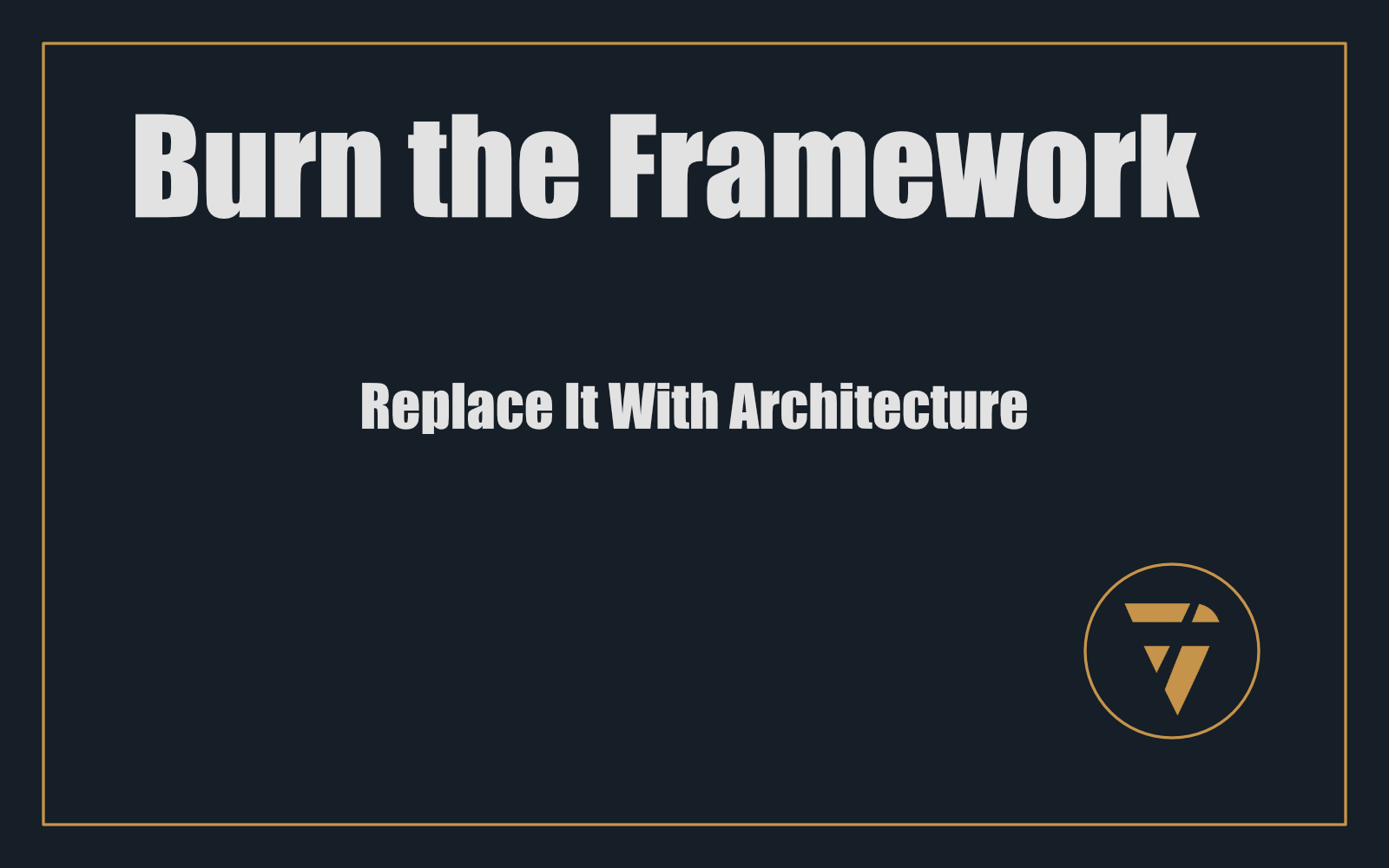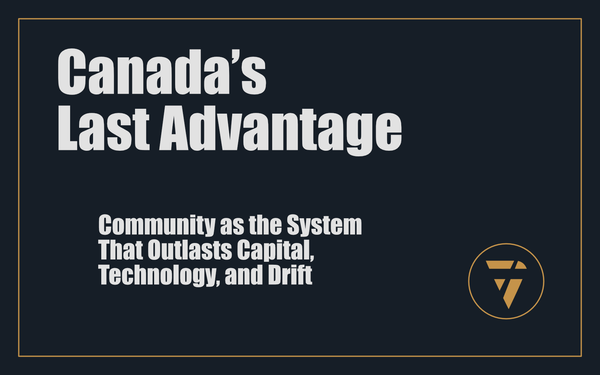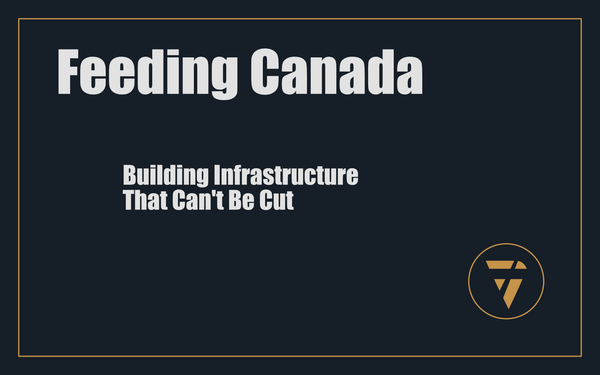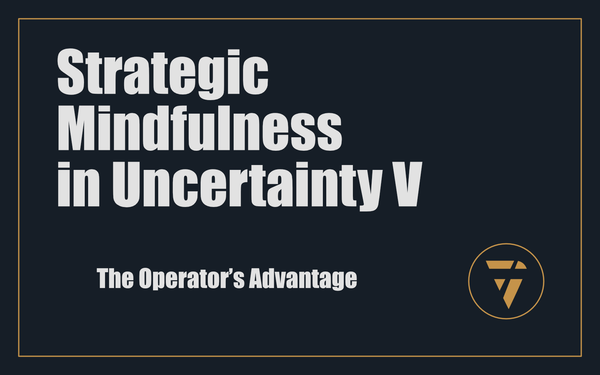Burn the Framework

Replace It With Architecture
You’ve been sold a lie.
The lie is that strategy exists inside a neatly organised slide deck, decorated with carefully crafted bullet points and polished visuals. It sits comfortably on your hard drive, reassuring you of your thoughtfulness, preparedness, and your supposed clarity. It promises that if you just follow its pages, success will inevitably emerge.
But you know better.
A deck isn’t a strategy—it’s theatre. A performance. An illusion built for comfort, not consequence. Frameworks feel good because they create an illusion of clarity, the comforting facade of predictability. But slide decks don’t drive businesses. They merely narrate a story about a business that could exist—if only someone bothered to build it.
Your team smiles politely in meetings. Investors nod approvingly. Clients pretend to read them. Yet, beneath these surface performances lies the truth you already feel but hesitate to admit: nothing meaningful moves when you close your laptop. The framework doesn’t live in the business—it lives in the comfort of your mind, safely distant from the realities of the market, execution, and consequence.
Real strategy isn’t a framework. It’s an architecture.
And architecture doesn’t live in slides. It lives in the motion your business makes when you’re gone.
Real strategy, real architecture, is silent, invisible, relentlessly effective. It’s not something you revisit quarterly—it’s something that operates continuously. Architecture runs beneath the surface of everything you do. It’s the invisible operating system of your enterprise, engineered to produce outcomes with or without your intervention.
If you can’t leave without everything collapsing, you’re not leading—you’re holding your business hostage.
Let’s say this plainly: strategy without architecture is just an expensive distraction. It feels productive, but it changes nothing. It convinces you of progress, but progress is never measured by the elegance of your plan—it’s measured by what happens in your absence.
If you step away today, does revenue continue?
Do decisions still happen?
Do customers keep converting?
Does your team move forward without checking in every few hours?
If not, your strategy is nothing more than a performance, dressed up in consulting language, masquerading as clarity. You don’t have strategy. You have dependency. And dependency is an expensive prison.
Here’s what genuine architecture looks like:
Architecture is permanent. It persists beyond your presence.
Architecture is structural. It’s embedded into workflows, decision pathways, and automated actions.
Architecture is self-reinforcing. Each action taken within it makes the system stronger, clearer, and more inevitable.
Architecture is invisible. It doesn’t rely on your charisma, memory, or oversight. It runs silently and relentlessly in the background.
Most importantly, architecture eliminates dependency. Real architecture means that when you step away—whether for a day or a year—the system holds. It grows. It improves. It thrives without you.
This isn’t about ego or control—it’s about leverage. The most successful operators understand one brutal truth: their job isn’t to work harder. It’s to systematically remove themselves from the operational equation entirely.
Your goal isn’t to perfect the slides. It’s to make them irrelevant. To turn your business into a self-driving engine that moves consistently forward without the need for you to push, pull, or persuade.
But here’s the uncomfortable truth beneath the comfort of frameworks:
- Frameworks are safe. They let you hide.
- Architecture is dangerous. It exposes gaps and weakness. It reveals who you are and who you’re not. It’s ruthlessly honest about your business’s strengths and weaknesses, because it doesn’t care about your ego—it cares about results.
When you shift from frameworks to architecture, you are forced to confront a brutal reality check. It’s uncomfortable, because it demands immediate action, real-world decisions, and a surrender of control. It demands you to trust systems, not personalities; processes, not intuition.
But that discomfort is the price of real leverage.
Let’s define your next move explicitly, step by step:
Step One: Destroy the Slides.
The slide deck you’ve been relying on is your security blanket. Delete it. It’s no longer needed.
Step Two: Name the Dependency.
Where does your business rely exclusively on your decision-making? On your intervention? On your direct oversight?
Identify precisely where the system breaks without you. Name the bottlenecks explicitly.
Step Three: Install Architecture.
Systematically eliminate each identified dependency through systems, automation, delegation, and structure.
Replace your intuition with decision-logic trees.
Replace meetings with automated checkpoints.
Replace manual approval with clear execution parameters.
Replace personal accountability with system-driven accountability.
This isn’t about efficiency—it’s about sovereignty. Sovereignty means your business is self-governed, free of dependency, free of personality, free of confusion.
If your business demands your constant presence, it isn’t architecture—it’s a prison. You built it, but now you’re trapped within it. Until you replace yourself structurally, you’ll remain the limiting factor.
Every second you remain central is a second you steal from growth.
This is not just about growth, though. It’s also about durability. Frameworks break. Frameworks fade. Frameworks are abandoned. But architecture endures. It lasts beyond your active involvement, your interest, your energy. It’s built to withstand cycles, downturns, and disruptions because it doesn’t depend on personal motivation or human consistency—it depends solely on structural integrity.
The future isn’t about how well you articulate your strategy. It’s about how well your business executes without you.
The era of the visionary leader at the centre of everything is gone. Leadership now means creating environments in which vision can emerge independently, autonomously, relentlessly. It’s about installing clarity so thoroughly into the DNA of your operations that it can’t help but scale, sustain, and thrive.
Today, right now, you have a choice:
- Keep polishing slides and perfecting frameworks, or
- Step back and build the architecture that makes those slides irrelevant.
One approach comforts you. The other empowers your business.
Stop pretending your strategy exists in a PDF file.
Stop believing the illusion that a beautiful presentation equals strategic clarity.
Start embedding architecture so deeply into your systems that your business finally becomes the self-driving engine it was always meant to be.
Burn the frameworks today.
Install the architecture immediately.
And see what moves without you.
If nothing moves, you never had a strategy at all. You had slides.
Your next step is simple—and terrifyingly effective: vanish temporarily. Step away. See what breaks, what holds, and what moves forward without you.
The breakages are your worklist.
The successes are your proof.
And the next time you build a deck, it won’t be theory—it will be documentation of a strategy already proven, operational, and irreversible.
The era of frameworks is done.
The age of architecture is here.
If you can’t leave, you don’t lead.
Burn the framework. Install the architecture.
This is what I’m working on. Tell me what you think, I enjoy the conversation! Subscribe and follow the work in real time.
Thanks!
B

Strategy doesn’t live in slides.
It lives in what your business does when you’re gone.
If you can’t leave, you don’t lead.
Burn the framework. Install the architecture.
PS -






